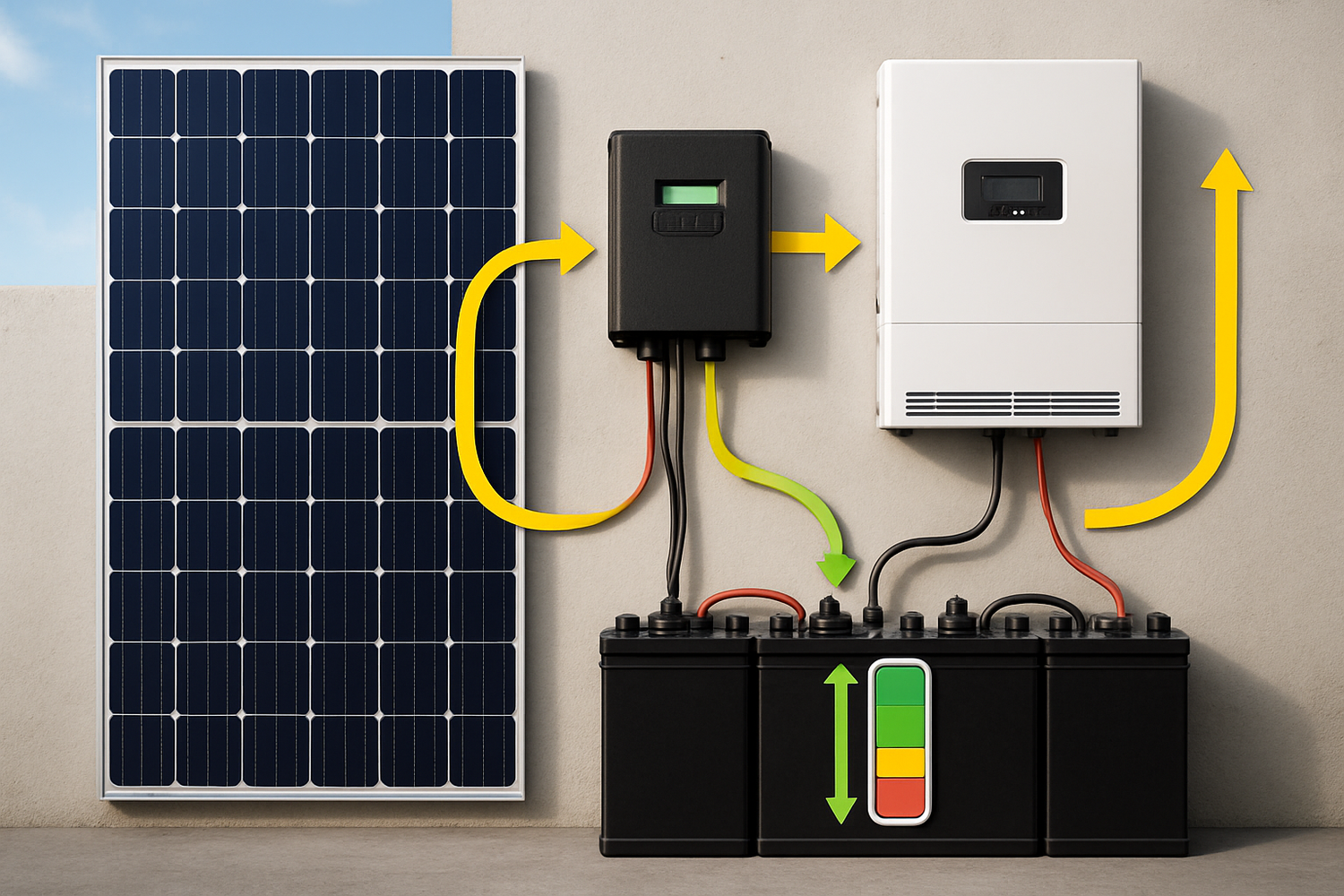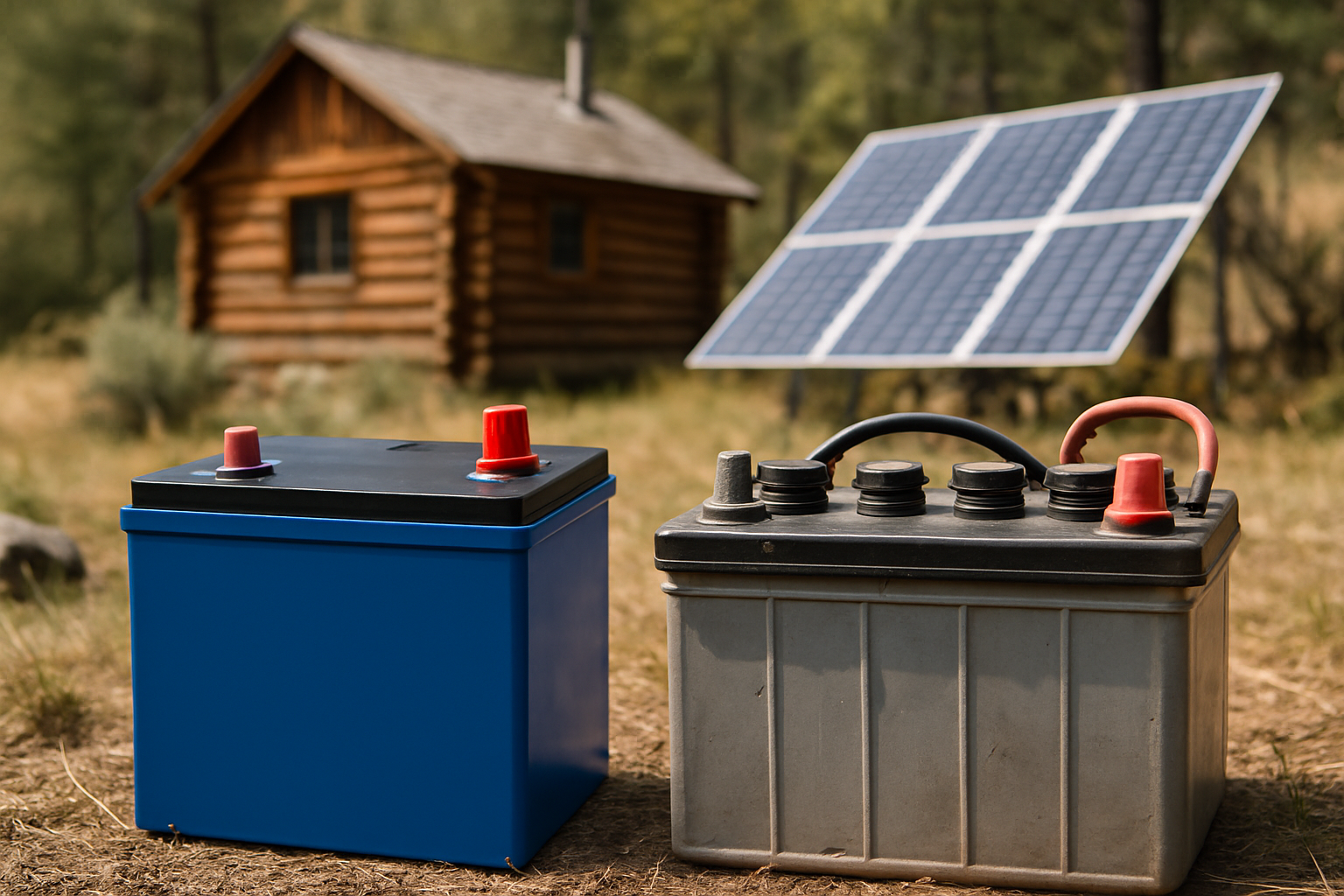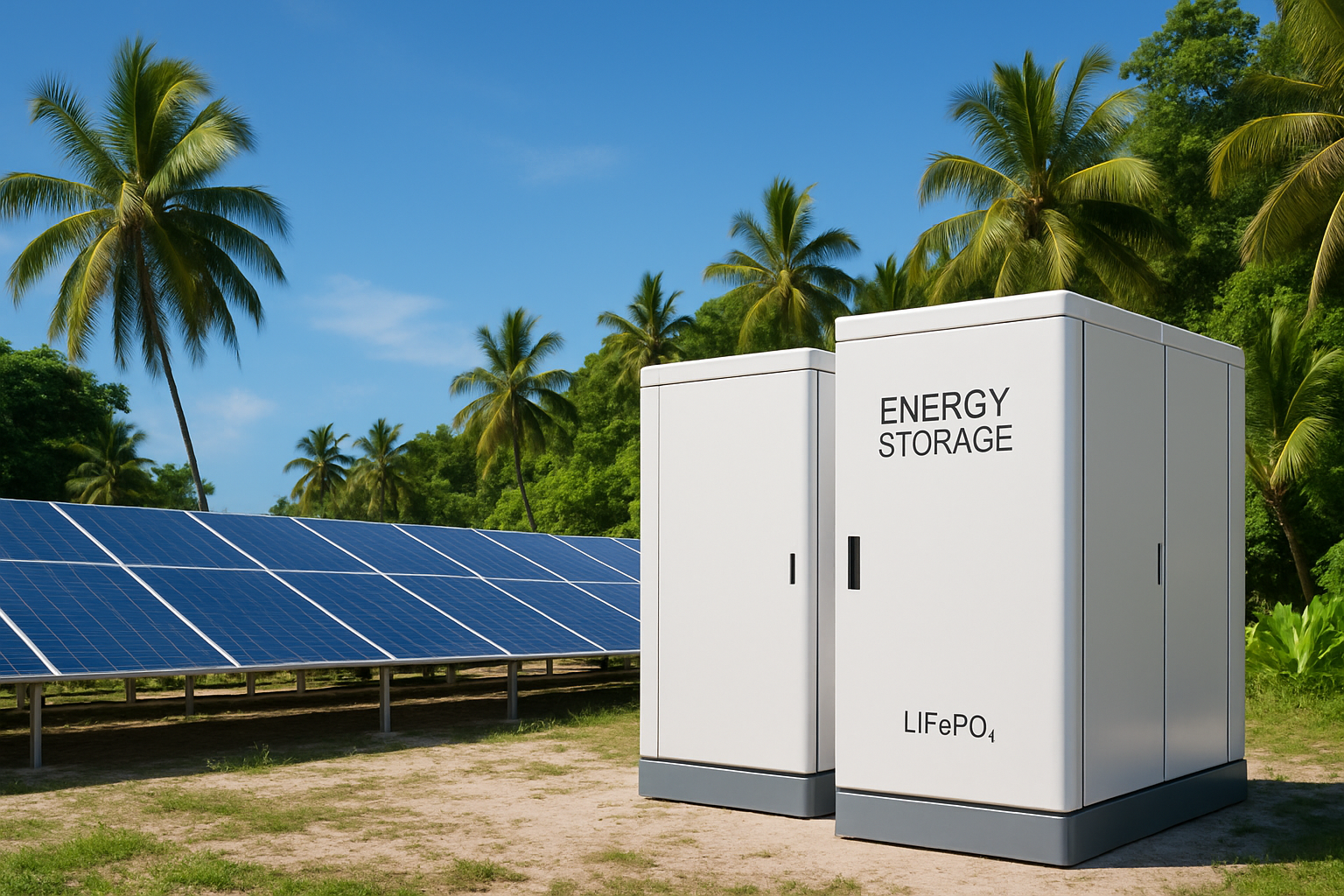Achieving true energy independence with an off-grid solar system relies heavily on the health and longevity of your battery bank. Batteries represent a significant investment, and their performance directly impacts your system's reliability. A critical factor in extending battery lifespan is maintaining an optimal State of Charge (SOC) window. This guide offers practical insights into managing your off-grid battery's SOC, focusing on strategies that enhance durability and efficiency.

Understanding Battery State of Charge in Off-Grid Systems
The State of Charge (SOC) indicates the current energy level of your battery relative to its total capacity. For off-grid applications, managing SOC is more dynamic than grid-tied systems because you are entirely reliant on stored energy and renewable generation. Unlike grid-connected systems where batteries might primarily provide ancillary services like frequency response, off-grid batteries are the primary energy reservoir. Innovation Outlook: Smart charging for electric vehicles, for instance, highlights the importance of SoC in various battery applications, underscoring its relevance across different energy storage contexts.
The Impact of SOC on Battery Lifespan
Operating batteries outside their ideal SOC window can accelerate degradation. Consistently deep discharging or overcharging stresses the battery chemistry, leading to reduced capacity and a shorter service life. For lithium iron phosphate (LiFePO4) batteries, known for their high performance and safety, maintaining a balanced SOC is particularly beneficial. These batteries generally tolerate a wider operational range compared to other chemistries, but optimization still yields significant benefits.
Why Off-Grid Systems Demand Specific SOC Strategies
Off-grid systems face unique challenges, including fluctuating solar input and varying load demands. This necessitates a proactive approach to SOC management. You need to balance meeting immediate energy needs with preserving long-term battery health. Effective SOC management in an off-grid setting means maximizing the energy available for use while safeguarding the battery against premature wear.
Defining Ideal SOC Windows for Longevity
For most LiFePO4 batteries in off-grid scenarios, an ideal SOC window typically ranges between 20% and 90%. Operating within this range helps to minimize stress on the battery cells. While LiFePO4 batteries can often be discharged deeper without immediate damage, consistently cycling them within a narrower, mid-range window significantly extends their cycle life.
The Benefits of Avoiding Extreme States of Charge
- Preventing Deep Discharges: Regularly discharging below 20% SOC can increase internal resistance and accelerate capacity fade. While modern battery management systems (BMS) prevent catastrophic deep discharge, staying above this threshold preserves more cycles.
- Avoiding Prolonged Full Charges: Keeping a LiFePO4 battery at 100% SOC for extended periods, especially in high temperatures, can also contribute to degradation. A brief period at full charge for cell balancing is acceptable, but continuous float charging at 100% is less ideal for long-term health.
Balancing Energy Needs with Battery Health
Your ideal SOC window might adjust based on your specific off-grid lifestyle and solar generation capacity. During periods of abundant sunshine, you might allow the battery to reach a higher SOC more frequently. Conversely, during cloudy spells or high demand, you might accept a lower minimum SOC, but always strive to return to the healthier range as soon as possible. The flexibility of energy storage, as discussed in the Success Story—Improving the Interconnection for Solar Energy and Battery Storage, highlights how crucial flexible operation is for maximizing system benefits, a principle equally applicable to off-grid optimization.
Strategies for Optimal SOC Management
Implementing effective SOC management involves a combination of smart system design, monitoring, and operational adjustments. You will gain greater control over your energy system and extend the life of your batteries.
Smart Charging and Discharging Practices
- Charge Controller Settings: Configure your solar charge controller to prioritize charging to the upper end of your ideal SOC window (e.g., 85-90%) and then reduce charging current or enter a float stage.
- Load Management: Be mindful of your energy consumption, especially during periods of low solar generation. Prioritize essential loads to avoid unnecessary deep discharges. Consider programmable outlets or smart home devices to manage non-essential loads.
- Hybrid Inverter Integration: Modern hybrid inverters, often found in integrated home energy storage systems, offer advanced features for SOC management. They can intelligently manage charge and discharge cycles based on user-defined parameters, weather forecasts, and even time-of-use rates if a grid connection is occasionally available.
Monitoring and Data Analysis
Regularly monitor your battery's SOC. Many off-grid systems include battery monitors that provide real-time data. Tracking trends in your SOC can help you identify patterns in your energy consumption and generation, allowing for proactive adjustments. Historical data can reveal if your system is consistently operating outside the optimal window, prompting changes to your usage habits or system configuration.
Here is a comparison of typical LiFePO4 battery SOC considerations:
| SOC Range | Impact on Lifespan | Off-Grid Application Notes |
|---|---|---|
| 0-20% (Deep Discharge) | Accelerated degradation, reduced cycle life | Avoid unless absolutely necessary; activate low-voltage disconnect. |
| 20-50% (Lower Operating) | Good for daily cycling, minimal stress | Common discharge range during evening/night. |
| 50-90% (Ideal Operating) | Optimal for longevity, balanced stress | Target charge range during daylight hours. |
| 90-100% (High Charge) | Acceptable for short periods, not prolonged | Allows for cell balancing; avoid extended storage at 100%. |
Advanced Considerations for Off-Grid Battery Health
Beyond daily SOC management, several other factors contribute to the long-term health of your off-grid battery system. Considering these elements helps you build a more robust and resilient energy solution.
Temperature Management
Extreme temperatures, both hot and cold, negatively affect battery performance and lifespan. Install your battery bank in a climate-controlled environment or a location protected from direct sunlight and freezing conditions. For example, operating at 30°C instead of 20°C can reduce battery life by approximately 20-30% over time.
Proper Sizing of Your Battery Bank
An undersized battery bank will force deeper discharge cycles more frequently, putting undue stress on the batteries. A properly sized system, considering your average daily energy consumption and days of autonomy, allows for more comfortable operation within the ideal SOC window. For instance, if your daily consumption is 5 kWh, and you want 3 days of autonomy, you would need a usable capacity of at least 15 kWh, plus a buffer for the ideal SOC window.
Battery Management System (BMS) Importance
A robust Battery Management System (BMS) is indispensable for LiFePO4 batteries. It monitors individual cell voltages, temperatures, and current, protecting the battery from overcharge, over-discharge, over-current, and short circuits. A good BMS also performs cell balancing, ensuring all cells in the pack maintain similar voltages, which is crucial for overall pack health and maintaining the ideal SOC effectively.
Empowering Your Off-Grid Lifestyle
By actively managing your off-grid battery's State of Charge, you are not just performing routine maintenance; you are actively extending the life of your energy system. This proactive approach ensures your investment in solar and storage continues to provide reliable, sustainable power for years to come. Focusing on optimal SOC windows, combined with smart system design and monitoring, empowers you to achieve genuine energy independence and maximize the value of your off-grid solution.
Frequently Asked Questions
What is the most critical factor for off-grid battery longevity?
Maintaining the battery within its ideal State of Charge (SOC) window, typically 20% to 90% for LiFePO4 batteries, is among the most critical factors. Avoiding consistent deep discharges and prolonged full charges significantly extends lifespan.
Can I discharge my LiFePO4 battery to 0% SOC?
While a Battery Management System (BMS) prevents true 0% discharge to protect the cells, regularly pushing the battery to its low-voltage cutoff (which might be indicated as 0% on a monitor but still has residual charge) will significantly reduce its cycle life. It is best to avoid this practice for long-term health.
How often should I check my battery's SOC?
For off-grid systems, daily monitoring of your SOC is highly recommended. This allows you to track energy usage patterns, assess solar generation effectiveness, and make timely adjustments to your consumption or charging strategy.
Does temperature affect the ideal SOC window?
Extreme temperatures do not directly change the ideal SOC window percentages, but they do impact battery performance and degradation rates. Operating batteries in a moderate temperature range (e.g., 15-35°C) is crucial for maximizing lifespan, regardless of the SOC. High temperatures at high SOC are particularly detrimental.
What role does a Battery Management System (BMS) play in SOC management?
A BMS is vital. It monitors individual cell voltages and temperatures, prevents overcharge and over-discharge, and performs cell balancing. These functions ensure the battery operates safely and efficiently within its intended SOC parameters, protecting it from damage and prolonging its life.





Leave a comment
All comments are moderated before being published.
This site is protected by hCaptcha and the hCaptcha Privacy Policy and Terms of Service apply.